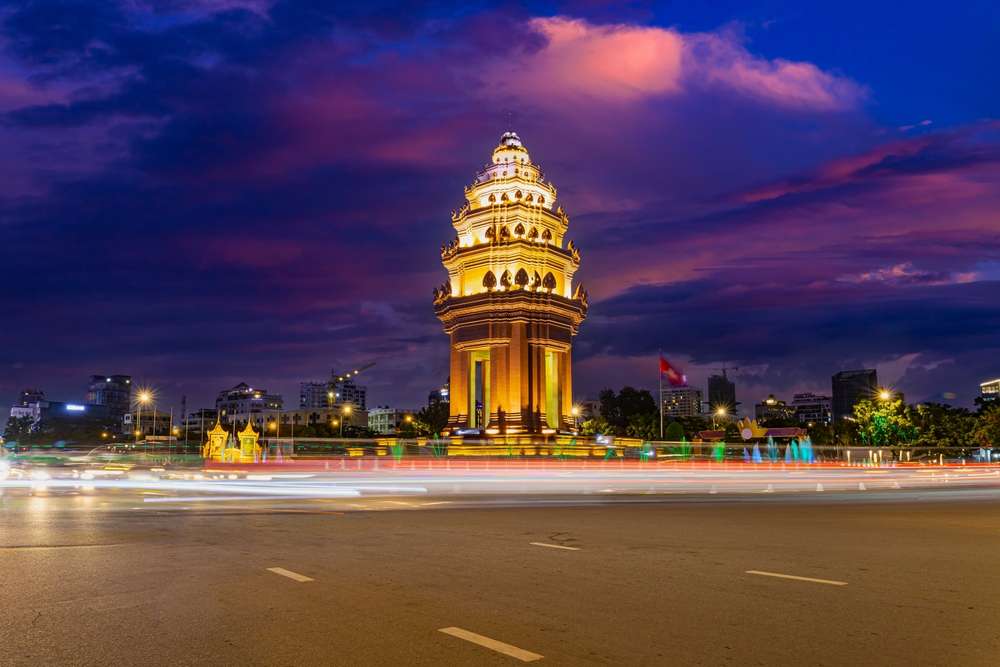Although Cambodia is well-known for its historic temples, vibrant cities, and immaculate islands, tucked away in the northeastern part of the nation is a rare and enchanted encounter: seeing the threatened Irrawaddy dolphins in their native habitat. Travelers have been enthralled with these unusual freshwater dolphins for decades thanks to their quiet demeanor and rounder heads. Dolphins watching in Cambodia is an event you shouldn’t miss if you seek a quiet yet remarkable wildlife encounter.
The Irrawaddy Dolphin: A Rare and Mysterious Species
Irrawaddy dolphins, freshwater animals unlike their ocean-dwelling cousins, favor the quiet, slow-moving rivers and estuaries. Unlike more familiar bottlenose dolphins, their unique characteristics set them apart from other dolphins; they lack a beak and have a more rounded forehead. Often emerging silently and vanishing just as rapidly, they are noted for their soft and elusive character.
With just a meager population left in the Mekong River, these dolphins are regarded as severely endangered. Habit loss, overfishing, and illicit fishing methods endanger their survival, so conservation initiatives become more vital than ever. Responsible dolphin viewing allows guests to help preserve these amazing animals while still having an amazing experience of Cambodia’s natural beauty.
CAMBODIA VISA FOR NAMIBIAN CITIZENS
Kratie: The Best Place for Dolphin Watching
Dolphins are seen in Cambodia, which is centered on the little riverfront town of Kratie. Kratie, on the banks of the Mekong River, provides a peaceful haven from the more crowded cities of the nation. Visitors swarm here not only for the dolphins but also for the laid-back appeal and breathtaking river vistas.
About 15 kilometers north of Kratie, a little community called Kampi is the greatest place to watch the Irrawaddy dolphins. Here, the river opens out, providing the ideal habitat for these unique animals. Local boat companies provide guided trips to take guests out onto the sea so they may see dolphins in their natural habitat. You should go early in the morning or late afternoon when the water is calm, and the likelihood of sightings is maximum. Luck will bring you to watch the dolphins surfacing elegantly, perhaps in small pods, as they negotiate the mild river flows.
The surroundings enhance the experience even if the dolphins are the centerpiece. The river is dotted with lush green islands, and the water wonderfully reflects the golden tones of the evening sun. Birdwatchers will also be thrilled to spot several types of waterfowl that call the area home.
Koh Pdao: A Community-Based Conservation Effort
A visit to Koh Pdao, an island further along the Mekong River, offers a more immersive experience for those seeking it since it lets one watch dolphins while supporting a community-based ecotourism effort. While providing homestay experiences to guests, the island’s residents collaborate with conservation groups to safeguard the dolphins and their ecosystem.
A stay on Koh Pdao lets guests join guided boat trips run by nearby fishermen who know the river like the back of their hand. These visits offer insight into the daily life of the people who rely on the river, not only access to animals. With home-cooked food, friendly hospitality, and an opportunity to learn about sustainable fishing methods that help to save the dolphins, staying with a local family provides a window into traditional Cambodian culture.
The Importance of Responsible Dolphin Watching
Though dolphin viewing is a wonderful experience, it is important to approach it about the animals and the surroundings. Visitors should select operators that adhere to moral standards, including maintaining a safe distance from the dolphins, avoiding loud noises, and utilizing boats with the least possible environmental damage. Supporting local ecotourism programs and conservation efforts guarantees that travel benefits the local population and aids in the protection of the delicate Mekong River ecology.
Travelers can also help by spreading knowledge of the dangers confronting Irrawaddy dolphins. Gill nets and other illegal fishing techniques endanger the species and cause unintentional entanglement, lowering their declining count. Visitors may help to protect Cambodia’s natural legacy by supporting sustainable travel and tougher conservation policies.
CAMBODIA VISA FOR NEPALI CITIZENS
Beyond the Dolphins: Exploring Kratie’s Hidden Gems
A vacation to Kratie is more than just dolphin viewing; the town has many hidden treasures and appeal. Strolling down the riverfront at sunset is essential since the colonial-era structures and serene environment define the scene.
For a cultural experience, see Phnom Sombok, a little hilltop pagoda providing panoramic views of the nearby landscape. Along the route, the ascent to the peak rewards with golden Buddha sculptures and serene gardens. Another fantastic stop is the adjacent Mekong Turtle Conservation Center, where guests may learn about initiatives to save freshwater turtles under threat in the area.
A little ferry ride from Kratie will lead you to Koh Trong, a lovely Mekong island noted for its traditional stilt homes and riding paths. Renting a bicycle and riding over the verdant surroundings of the island is the ideal approach to slow down and appreciate the rural beauty of Cambodia.
An Unforgettable Wildlife Experience
More than just a chance to observe a rare animal few people get to see in their lifetime, dolphin viewing in Cambodia allows one to connect with nature, help local communities, and support local businesses. This experience will stay with you whether your quest for Irrawaddy dolphins is along the Mekong River, you stay in a small community on Koh Pdao, or you enjoy the amazing Kratie landscape. Responsible travel and support of conservation initiatives will help ensure that other generations can also see these amazing dolphins in the wild.

